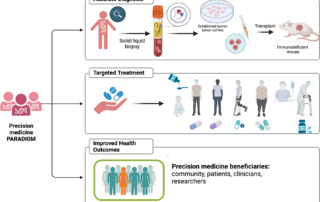Mastering the Art of Real Estate in a Challenging Market

Mastering the Art of Real Estate in a Challenging Market
Insights and Strategies for Success
It’s a weird time to be a real estate agent, and I see it all around me here in the Denver metro.
Brokers who rode the proverbial wave of real estate during the pandemic and have now had to reroute or pivot to figure out how to navigate a market that was once boasting the lowest rates in decades are disoriented.
For those of us who have spent most of our careers in real estate, we know what it’s like to be part of a feast or famine industry.
But what happens to real estate agents when the market shifts and goes down? When people are less apt to buy and sell property? What happens when unstable income gets even more unreliable?
The reality is that in real estate, success is not exclusively tied to a booming market, though the headlines would have us all believe otherwise.
In fact, some of the most successful real estate agents have thrived even more when times are tough. Surviving and thriving in a down market necessitates a unique blend of skills and strategies.
To make it in such an environment, real estate professionals must embrace the following elements: visibility, systems, consistency, education and prospecting, along with a commitment to being an actual expert in their field.
Making Your Presence Known: Embracing Visibility
In a down housing market, it goes without saying that visibility is crucial. Your prospective clients need to know that you’re a real estate agent and you’re still an active player in the field. Establishing and maintaining your visibility involves actively engaging with potential clients, networking, and participating in the local real estate community.
Consistently being active on social media is still the most effective way to enhance your visibility. Read about what’s going on in the market. Share your insights about it on your stories or your statuses, offer tips for buyers and sellers, and showcase your expertise. Regularly updated profiles on platforms like LinkedIn, Instagram, and Twitter can serve as a digital business card, making it easier for potential clients to find you.
Nurturing Client Relationships: The Power of Systems
A strong Customer Relationship Management (CRM) system is also a secret weapon in a slower market. While we all know it’s essential to generate new leads, it’s equally crucial to nurture those existing relationships so they don’t get an email from you and think to themselves “huh, where’d I meet that person?” A CRM helps you organize your contacts, track interactions, and set reminders for follow-ups. This ensures that no lead falls through the cracks, allowing you to maintain a consistent and personal connection with your clients. Actively following up on your CRM is key. Your clients are facing an uncertain market, and they’ll appreciate the reassurance that comes from dedicated follow-up efforts.
The Steady Path to Getting What You Want: Consistency
Because real estate isn’t a nine-to-five job, consistency is the backbone of success in this field, especially during challenging markets. You’ve got to reach out to your sphere of influence and stay engaged with the broader market. Maintaining a regular presence in your clients’ lives ensures that they think of you when they decide to buy or sell and don’t call the guy they met down the street a few weeks ago.
Consistency doesn’t just apply to your outreach efforts; it also extends to your work ethic. Word-of-mouth will always be your best asset, but you got to make sure it’s a positive one. Keep delivering high-quality service, even when the market is slow. This reputation for reliability will set you apart from others and build trust with clients.
- Reach out to your sphere of influence regularly
- Maintain a regular presence in your clients’ lives
- Deliver high-quality service consistently
Consistency is key to long-term success in the real estate industry.
Continuous Learning in Real Estate: Becoming the Expert
To thrive in a slower market, you need to be an expert in your field. This means understanding not only the market’s current state but also its history and future trends. Being well-informed allows you to guide your clients effectively, helping them make informed decisions that protect their investments.
Education involves continuous learning. We’ve got to attend industry conferences, take courses, and read books and articles related to real estate. If you’re with a brokerage, ask them what mentorship opportunities they have available. The more you have to pull from, the better equipped you’ll be to navigate the complexities of a down market. And the more potential clients will trust you.
Prospecting in a Challenging Market: Growing Your Business
Prospecting is the lifeblood of any real estate business, regardless of market conditions. This can involve hosting open houses, reaching out to your sphere of influence, and networking with other professionals in the industry.
Joining networks, clubs, and groups specific to your real estate market can significantly expand your reach. Don’t underestimate this even if you’d rather be on the couch than out at a brewery networking with others. Even in a slow market, there are still buyers and sellers out there.
The Real Estate Agent’s Guide to Success: Thriving in Any Market
Succeeding as a real estate agent has and always will demand a combination of hard work and commitment. You must become an expert in your field, consistently provide value to your clients, and actively work to grow your business. The market may be challenging, but there are always opportunities for those who are dedicated.
Ultimately, it all comes down to maintaining a visible online presence, leveraging CRM systems to stay organized, and adhering to a rigorous schedule of outreach and follow-up. The path to continued success as a real estate agent may be challenging, but it’s far from impossible. Business is always adapting, but there are key tools that will help you succeed in any market. Stick to the foundations, then build other pieces on top!
Unlock Your Potential in Real Estate
Take the first step towards a successful real estate career with Cameron Academy’s industry-leading courses.
Are you ready to take your real estate career to the next level? Cameron Academy offers a wide range of online career education courses designed to provide you with the knowledge and skills you need to succeed in the industry. Whether you’re looking to obtain or renew your professional license, our courses are tailored to your individual needs and goals. Join the thousands of satisfied students who have unlocked their potential with Cameron Academy. Start your journey today!
Ready to Get Started?
Explore our courses and take the first step towards a successful real estate career.
Explore Our CoursesMore Articles
Getting licensed or staying ahead in your career can be a journey—but it doesn’t have to be overwhelming. Grab your favorite coffee or tea, take a moment to relax, and browse through our articles. Whether you’re just starting out or renewing your expertise, we’ve got tips, insights, and advice to keep you moving forward. Here’s to your success—one sip and one step at a time!
Navigating Telemedicine: Challenges Amid DEA’s Regulatory Delays
In the evolving landscape of telemedicine, the U.S. Drug Enforcement Agency’s (DEA) potential crackdown on telemedicine prescribing has stirred concerns among healthcare professionals. Nathaniel Lacktman, a partner at Foley & Lardner LLP and a board member of the American Telemedicine Association, shared insights into these challenges in an article published by Endpoints News, a Financial Times publication.
Lacktman highlighted the ramifications of the DEA’s repeated delays in enacting telemedicine prescribing regulations, which have placed doctors and patients in a precarious position. The dilemma revolves around the conflict between federal prescribing laws and state laws on continuity of care. Should the DEA allow current waivers to expire without a viable alternative, patients may find themselves without necessary in-person medical support. This could expose doctors to claims of patient abandonment. “It’s putting doctors in a really difficult situation to determine if and when do I tell my patients that I can’t care for them?” Lacktman remarked.
Foley & Lardner LLP’s Telemedicine and Digital Health Industry Team is at the forefront of addressing these emerging issues. Recognized nationally by Chambers USA, the team supports organizations and entrepreneurs in navigating the complexities of virtual care, helping them provide innovative solutions for patients both locally and globally. Clients have praised Foley as “the premier firm for telehealth counsel,” “a market leader in telemedicine issues,” and “the Dream Team.”
The ongoing regulatory delays by the DEA underscore the challenges posed by a mixed federal-state legal landscape affecting telemedicine. As the telemedicine industry continues to grow, the need for clear and consistent regulations becomes increasingly critical to ensure that both doctors and patients can navigate this new frontier safely and effectively.
Bitcoin: A New Era or Just a Passing Phase?
Bitcoin: A New Era or Just a Passing Phase?
:max_bytes(150000):strip_icc()/business_building_153697270-5bfc2b9846e0fb0083c07d69.jpg) In the ever-evolving landscape of financial technology, Bitcoin stands as a revolutionary force, challenging the traditional stronghold of central banks. As a decentralized peer-to-peer digital currency, Bitcoin operates independently of government oversight, sparking debates about its potential to replace fiat currencies.
In the ever-evolving landscape of financial technology, Bitcoin stands as a revolutionary force, challenging the traditional stronghold of central banks. As a decentralized peer-to-peer digital currency, Bitcoin operates independently of government oversight, sparking debates about its potential to replace fiat currencies.
The Role of Central Banks
Central banks, such as the Federal Reserve in the United States and the Bank of England, are pivotal in managing national economies. They control inflation, regulate money supply, and set interest rates. These institutions have been instrumental in stabilizing economies, but they have also been criticized for their role in economic crises, such as the Great Depression and the Great Recession.Bitcoin’s Decentralized Promise
Bitcoin’s decentralized nature offers an alternative to the centralized control of traditional financial systems. Proponents argue that it could democratize access to financial services and reduce the risk of economic mismanagement by central authorities. However, the challenges of widespread adoption and security vulnerabilities cannot be ignored.Challenges and Limitations
Despite its potential, Bitcoin faces significant hurdles. The complexity of its initial interface and the risk of software vulnerabilities present barriers to its widespread use. Furthermore, its value is inherently tied to fiat currencies, which are subject to inflationary pressures. The limited supply of Bitcoin also raises concerns about its ability to function as a stable medium of exchange.Central Banks and Digital Currencies
In response to the rise of Bitcoin, central banks are exploring the development of central bank digital currencies (CBDCs). These digital currencies aim to combine the benefits of digital transactions with the stability of government backing. While still in the exploratory phase, CBDCs could offer a competitive alternative to Bitcoin.The Future of Financial Systems
While Bitcoin has captured the imagination of speculators and tech enthusiasts, its role in the future of financial systems remains uncertain. As central banks continue to adapt and innovate, the interplay between traditional financial institutions and decentralized technologies will shape the future of global economies.“`
Cryptocurrency: A New Financial Frontier
Cryptocurrency: A New Financial Frontier
Cryptocurrencies have emerged as a groundbreaking innovation in the financial landscape, offering a decentralized alternative to traditional currencies. These digital or virtual currencies are secured by cryptography, which makes them resistant to fraud and double-spending. They operate on decentralized networks using blockchain technology, a distributed ledger enforced by a network of computers. This system provides both advantages and challenges, as detailed in a recent Investopedia article.
Understanding the Basics
At the core of cryptocurrencies is the concept of decentralization. Unlike traditional currencies, they are not issued by any central authority, making them theoretically immune to government interference. This decentralized structure allows for faster and cheaper transactions, as it eliminates the need for third-party intermediaries like banks.
Blockchain technology is central to the functionality of cryptocurrencies. It consists of a series of connected blocks of information, each containing a set of transactions that are independently verified by a network of validators. This makes it nearly impossible to forge transaction histories, as the contents must be agreed upon by a network of computers.
Types of Cryptocurrency
There are various types of cryptocurrencies, each serving different purposes. For example, Ethereum’s ether is used for validating transactions on its blockchain. Other types include transactional tokens like Bitcoin, governance tokens like Uniswap, and security tokens representing ownership of assets.
Investing in Cryptocurrency
Investing in cryptocurrencies requires careful consideration due to their inherent risks. While they offer potential for high returns, they are also known for their volatility and regulatory ambiguity. Investors can purchase cryptocurrencies through exchanges or invest in crypto ETFs, which provide exposure to the asset class without the need for a digital wallet.
The legal status of cryptocurrencies varies worldwide. In the United States, they are considered securities when purchased by institutional buyers but not by retail investors. In Asia, countries like Japan recognize Bitcoin as legal property, while China has banned cryptocurrency exchanges and transactions.
Advantages and Disadvantages
Cryptocurrencies offer several advantages, including the removal of single points of failure, easier fund transfers, and the elimination of third-party intermediaries. However, they also pose challenges such as pseudonymous transactions, which can be used for criminal activities, and high energy consumption for mining.
Despite these challenges, cryptocurrencies continue to gain popularity, with a total market capitalization reaching trillions of dollars. As digital assets, they appeal to those interested in speculative investments, but they require a cautious approach due to the risks involved.
:max_bytes(150000):strip_icc()/TermDefinitions_crypto_final-940e93a6cb5341999a5d735fbf04fbfe.png)
The Bottom Line
Cryptocurrencies represent a new financial paradigm, offering both opportunities and challenges. While they have the potential to disrupt various industries, they also require investors to understand the risks involved. As highlighted in the original article, it is crucial for investors to approach this innovative technology with caution and awareness of its potential and limitations.
AI Transforming Health Care: Bridging Academic and Clinical Practices
In the ever-evolving landscape of health care, artificial intelligence (AI) is emerging as a transformative force, bridging the gap between academic institutions and clinical practice. As reported by Oncology Nurse Advisor, AI is revolutionizing diagnostics, treatment, and patient care, with significant advancements particularly noted in fields like radiology and oncology.
AI’s potential to enhance diagnostic accuracy has been a focal point, as its integration with physician diagnoses is believed to improve confidence and system performance. The original article highlights how AI is being utilized to develop automated cancer detection software, which is crucial for early diagnosis and personalized treatment regimens.
AI in Academic vs Clinical Settings
While academic institutions are at the forefront of AI research, focusing on developing and validating digital therapeutic tools, clinical practices are leveraging AI primarily to improve workflow efficiency. Dr. Ravi B Parikh from the University of Pennsylvania emphasizes that AI tools approved by the FDA are often more accessible to larger academic health systems, leaving smaller clinics at a disadvantage due to cost and data limitations.
Despite these challenges, the potential for AI to reduce the administrative burden in clinical settings is promising. AI can streamline tasks such as billing and claims processing, which could significantly enhance patient satisfaction and management.
Remote Monitoring and Telemedicine
The COVID-19 pandemic has accelerated investment in remote monitoring technologies, with AI-powered wearables and virtual nursing assistants emerging as key tools for patient care. These innovations are particularly beneficial for underserved areas, where AI-driven diagnostic tools can aid health care professionals in making accurate diagnoses based on patient-reported symptoms.
However, device literacy remains a barrier, as noted by Dr. Parikh, who calls for solutions that enhance the ability to process patient visits and improve documentation without necessarily requiring FDA approval.
The Future of AI in Health Care
AI and machine learning hold the promise of more precise immune therapies, improved clinical decision-making, and ultimately, better patient outcomes. Dr. Parikh predicts that within the next 5 to 10 years, AI will become as integrated into health care as electronic health records once were.
As AI continues to evolve, the focus must remain on making these technologies accessible to all health care providers, ensuring that the benefits of AI are felt across both large academic systems and community-based health facilities.
AI Revolutionizes Cancer Diagnostics
The AI Advantage in Oncology
AI’s integration into healthcare, particularly in oncology, marks a significant shift towards precision medicine. By analyzing vast datasets, AI can detect cancerous cells with greater accuracy, aiding doctors in diagnosing potential cancers, predicting developments, and planning personalized treatments. This technological advancement is not only enhancing imaging processes but also helping reduce unnecessary biopsies and false positives.
A Patient’s Journey
Consider the case of a woman who discovered a worrying lump in her thyroid. Initially, her doctor ordered an ultrasound and subsequent biopsy due to concerning results. However, seeking a second opinion from a radiologist utilizing AI-driven ultrasound exams revealed that the tissue was benign. This revelation, supported by her biopsy results, highlights AI’s potential to prevent invasive procedures and alleviate patient anxiety.
FDA-Approved AI Tools
The FDA has approved AI-assisted tools for detecting various cancer types, including brain, breast, lung, prostate, skin, and thyroid cancers. These tools are trained on enormous amounts of data, providing a deeper analysis of images such as mammograms, sonograms, x-rays, and MRIs. AI’s ability to highlight lesions with precision and differentiate levels of abnormalities is akin to consulting a brilliant colleague, as described by experts in the field.
Benefits and Challenges
- AI-assisted imaging offers several benefits, such as accelerating diagnosis and treatment, reducing false positives, and enabling earlier intervention.
- However, challenges remain, including the potential for false readings and inherent biases within AI algorithms.
In conclusion, as AI continues to evolve, it promises to transform cancer diagnostics, offering hope for better health outcomes and a more proactive approach to patient care.
AI in Precision Medicine: Navigating Challenges and Embracing Opportunities
AI in Precision Medicine: Navigating Challenges and Embracing Opportunities
In the rapidly evolving landscape of healthcare, Artificial Intelligence (AI) is emerging as a pivotal force in precision medicine, promising to enhance diagnostic accuracy and treatment outcomes. However, as highlighted in a recent review article published in the Journal of Translational Medicine on April 30, 2024, the journey toward fully integrating AI into healthcare systems is fraught with challenges.

The Promise of AI in Healthcare
AI’s potential to revolutionize healthcare lies in its ability to process vast amounts of data, uncover hidden patterns, and support clinical decision-making. It is particularly promising in the realms of drug development and clinical practice, where it can streamline processes, reduce costs, and improve patient experiences. The article underscores AI’s role in making healthcare more sustainable by enhancing efficiency and reducing diagnostic errors.
Challenges and Limitations
Despite its promise, the application of AI in precision medicine is not without hurdles. Key concerns include data quality, biases in AI algorithms, and issues related to data privacy and security. The article emphasizes the need for high-quality, well-annotated datasets and robust privacy safeguards to ensure the ethical and effective deployment of AI technologies.
Unlocking AI’s Full Potential
To truly harness AI’s capabilities, the healthcare industry must address these challenges head-on. This involves implementing strategies to mitigate biases, ensuring data integrity, and fostering interdisciplinary collaborations. The authors, Claudio Carini and Attila A. Seyhan, affiliated with institutions like King’s College London and Brown University, advocate for a concerted effort to integrate AI into healthcare systems while maintaining a focus on equity and ethics.
Looking Ahead
As AI continues to advance, its integration into precision medicine offers the potential to transform healthcare delivery. By addressing existing challenges and leveraging AI’s strengths, the industry can move closer to realizing a future where healthcare is more personalized, efficient, and accessible.
For more insights into the fundamentals of open access and open research, visit Springer Nature. Metrics and additional details about the article can be found on the journal’s website.
Author Information
Claudio Carini is affiliated with the School of Cancer and Pharmaceutical Sciences at King’s College London and the Biomarkers Consortium at the Foundation of the National Institute of Health. Attila A. Seyhan is based at Brown University, involved with various departments including the Laboratory of Translational Oncology and Experimental Cancer Therapeutics.
Contact
For correspondence, reach out to Claudio Carini at [email protected] or Attila A. Seyhan at [email protected].
The Expanding Role of Telehealth in Nursing
The Expanding Role of Telehealth in Nursing
Nurses, the unsung heroes on the front lines of patient care, are increasingly embracing telehealth technology as a core component of their roles. As reported by Southern New Hampshire University, telehealth offers a transformative opportunity to enhance patient outcomes and broaden access to healthcare. This shift is particularly pertinent in the face of an aging population and ongoing nursing shortages. “Across the entire patient experience, and wherever there is someone in need of care, nurses work tirelessly to identify and protect the needs of the individual,” said Dr. Lisa Bechok, a clinical faculty member for SNHU nursing programs. Her insights underscore the indispensable role of nurses in safeguarding public health, as they navigate the complexities of diagnosis, treatment, and public education.
“Across the entire patient experience, and wherever there is someone in need of care, nurses work tirelessly to identify and protect the needs of the individual,” said Dr. Lisa Bechok, a clinical faculty member for SNHU nursing programs. Her insights underscore the indispensable role of nurses in safeguarding public health, as they navigate the complexities of diagnosis, treatment, and public education.
Telehealth: A New Era in Patient Care
Telehealth is defined by the National Institute of Biomedical Imaging and Bioengineering as the use of communication technology to provide medical care at a distance. This innovation allows patients to remain at home while receiving care, thereby reducing healthcare costs and improving outcomes. The U.S. Department of Health and Human Services notes that telehealth usage surged during the COVID-19 pandemic, highlighting its growing importance in healthcare delivery.Benefits and Challenges of Telehealth
The benefits of telehealth are manifold. It supports in-patient care, enables remote monitoring of vital signs, and facilitates real-time data sharing with doctors and specialists worldwide. Moreover, telehealth can significantly reduce healthcare costs. The National Cancer Institute reports that telehealth services can save patients an average of $147 to $186 per visit.However, challenges remain. Limited access to broadband internet in rural areas, regulatory hurdles in medical licensure, and patient privacy concerns are barriers to widespread telehealth adoption. Despite these challenges, the pandemic has accelerated the integration of telehealth, offering new tools and technologies for nurses.
The Future of Telehealth in Nursing
As telehealth continues to evolve, it is clear that its role in nursing will only expand. While the technology offers flexibility and efficiency, it is crucial for both providers and patients to embrace its potential. Dr. Bechok emphasizes, “The role of the nurse in telehealth is no different than face-to-face nursing, it is just done in a different way using technology.”In conclusion, telehealth represents a significant shift in healthcare delivery, offering a promising path forward for nursing. As we navigate this new era, the dedication and adaptability of nurses will remain the cornerstone of patient care.
Consolidation in FinTech: The New Era of Bank-Partnerships
In the ever-evolving world of finance, the FinTech sector has been a beacon of innovation and disruption over the past decade. Recently, however, a noticeable shift towards consolidation has emerged, reshaping the landscape of bank-FinTech partnerships.
Speaking to PYMNTS, Priority Chief Strategy Officer Sean Kiewiet explained how a few key events have catalyzed a consolidation cycle within the industry. “Back in the heyday, it was expanding,” Kiewiet remarked, highlighting the era of rapid growth and frequent new partnerships. Now, however, the focus has shifted to a more selective collaboration between banks and FinTechs, emphasizing proven technology and value propositions.
The Best of Both Worlds
At the heart of successful bank-FinTech partnerships lies the promise of blending the best of both worlds. Banks bring stability and trust, while FinTechs offer speed and innovation. “It’s the promise of the best of both worlds,” Kiewiet noted, underscoring the potential of these collaborations to enhance financial services without compromising core stability.
However, this synergy is not without its challenges. Banks, often slow to change, must navigate the rapid iteration and innovation that FinTechs champion. The cultural and operational differences between these entities can create friction, yet when aligned properly, they can drive significant advancements in the industry.
Targeting Synergies for Maximum Impact
The consolidation trend has brought to light the importance of targeting specific synergies for maximum impact. While some partnerships thrive on vertical integration, offering specialized services like loan processing, others face challenges when attempting to merge batch-based systems with real-time operations.
“Banks operate with a very specific set of requirements,” Kiewiet explained, pointing to the regulatory capital and risk structures that banks must adhere to. Conversely, FinTechs often adopt a more flexible approach, which can lead to operational discrepancies if not carefully managed.
Ultimately, the most successful partnerships are those that understand and leverage each party’s strengths and limitations. By focusing on well-defined use cases and aligning operational models, banks and FinTechs can continue to innovate while maintaining the stability that customers rely on.
AI Revolutionizing Healthcare: From Diagnostics to Pandemics
Dr. Thomas M. Maddox, a leading expert in digital products and innovation at BJC HealthCare, predicts that AI will soon be embedded in almost every aspect of healthcare. This year, tech budgets for AI in healthcare companies are expected to grow significantly, reflecting its increasing importance.

AI’s impact on clinical diagnostics is profound. It enhances the ability to interpret medical images such as X-rays and MRIs, often surpassing human accuracy. By identifying patterns that even seasoned professionals might miss, AI complements human expertise, improving diagnostic precision.
Moreover, AI is driving breakthroughs in research. Dr. Lee Schwamm from Yale School of Medicine highlights how AI has enabled the visualization of proteins within DNA, paving the way for targeted treatments that were once beyond reach.
Beyond diagnostics, AI’s potential extends to predicting future pandemics. According to a Medical Science Monitor editorial, AI systems had already flagged unusual pneumonia cases before the COVID-19 outbreak, demonstrating its capacity to detect early signs of infectious diseases.
However, the proliferation of AI in healthcare raises ethical concerns. Ensuring that AI systems are free from biases and privacy risks is crucial. Regulatory bodies like the FDA, alongside the American Medical Association, are working to establish ethical guidelines for AI use in healthcare.
Despite these challenges, AI promises to enhance healthcare efficiency and patient experience. By automating documentation, physicians can focus more on patient interaction. AI-powered scheduling systems can also adapt to various factors, potentially reducing waiting times.
As AI continues to integrate into healthcare, it will undoubtedly transform the landscape. While AI-equipped physicians may outperform those without such tools, the technology is seen as an augmentation of the human touch, not a replacement.
Telehealth, Patient Reviews, and Retailization – 2024 Healthcare Digital Marketing Trends
Telehealth, Patient Reviews, and Retailization – 2024 Healthcare Digital Marketing Trends
The healthcare industry is undergoing a significant transformation, marked by rapid growth and innovation. By 2028, the global healthcare market is expected to reach a staggering $665.37 billion, while national healthcare spending is projected to soar to $5.7 trillion by 2026. In this dynamic landscape, healthcare companies must continuously innovate their digital experiences to stay competitive.
A shift in consumer behavior is becoming evident as healthcare consumers increasingly prioritize access to reliable content and convenient care. The Kyruus 2023 Care Benchmark Report highlights how the public is beginning to shop for healthcare services like any other goods, evaluating options based on quality, cost, and convenience.
To meet these evolving expectations, healthcare providers must develop robust digital marketing strategies and offer seamless online user experiences. Here are five healthcare marketing trends predicted to gain traction in 2024:
- The Rise of Retail in Healthcare: Major retailers have made significant investments in healthcare services and technologies, such as remote care and wearables, marking a disruption in the healthcare supply chain. These retail health brands excel in delivering user-friendly digital experiences, setting a new standard for convenience. According to a Salesforce study, 83% of consumers value their brand experience as much as the products or services offered, emphasizing the need for healthcare companies to focus on user-centered digital solutions.
- Content Marketing to Increase Share-of-Voice: With retailers positioning themselves as authoritative voices in healthcare and the rise of AI-generated content, consumers are increasingly skeptical about the information they encounter online. Healthcare marketers should leverage content marketing to provide credible information, enhancing their brand’s reputation and reliability. A SEMrush survey reveals that 62% of healthcare organizations outsource content creation to produce material at scale.
- Consumer Preference for Internet Search When Shopping for Care: While traditional resources like personal recommendations and health plan websites remain relevant, over half of healthcare consumers start their search with general online queries. Healthcare organizations need to enhance their SEO and SEM efforts to appear prominently in search results, catering to location-based queries that reflect consumer behavior.
- Online Patient Reviews as a Conversion Driver: Online reviews play a crucial role across industries, with patient reviews significantly influencing healthcare decisions. The Kyruus report highlights that 74% of consumers rate the quality of online reviews as very important. These reviews not only affect search visibility but also impact consumer choices, making it essential for healthcare providers to actively engage with online feedback.
- Digital Accessibility and Telehealth: The “consumerization” of healthcare dictates that patients expect perpetual access to care through digital channels. Telehealth’s prominence is evidenced by findings from KeyCare, which reports that 45% of consumers prefer telehealth visits for routine issues. Healthcare organizations must enhance telehealth service visibility and streamline online booking systems to meet these preferences.
The digital evolution in healthcare underscores the importance of delivering a cohesive digital experience to improve patient engagement and outcomes. Embracing these trends will position healthcare providers to meet the demands of the modern consumer efficiently.
Authored by: Allison Roy
This post is shared under the MedCity Influencers program, allowing professionals to voice insights on healthcare innovation on MedCity News. Learn more about participating in this initiative here.Climate Change and the Insurance Industry: A Growing Crisis
While homeowners insurance remained profitable in the Northeast last year, the situation is deteriorating nationwide. According to The New York Times, the number of states where homeowners insurance was unprofitable rose from eight in 2013 to eighteen last year. This trend mirrors a troubling surge in severe storms and wildfires across the Midwest, Southeast, and much of the West.
Insurers are responding to this crisis by increasing premiums, narrowing coverage, and even withdrawing from certain states entirely. This contraction in the insurance market casts a long shadow over the broader economy. Without insurance, securing a mortgage becomes nearly impossible, leading to fewer homebuyers, plummeting real estate values, and declining property tax revenues, which in turn strain local governments’ ability to fund essential services.
States are exploring various strategies to stabilize the industry, from facilitating premium hikes to encouraging resilience in home construction. Yet, with the relentless march of climate change and continued population shifts into high-risk areas, the effectiveness of these strategies remains uncertain.
“Insurance is where many people are feeling the economic impacts of climate change first,” notes Carolyn Kousky, Associate Vice President for Economics and Policy at the Environmental Defense Fund. This ripple effect could further impact housing and mortgage markets, along with local economies.
On a national scale, data from Moody’s indicates that insurers have paid out more in claims than they have collected in premiums over the past decade, and those losses are only increasing. The disparate impact across states is highlighted in state-specific charts, with an option to compare all states concurrently.
In summary, as insurers grapple with mounting losses, homeowners face a future of escalating costs and dwindling options—a direct consequence of an evolving climate reality.
Adapting Glaucoma Training and Treatment: Insights from the Orbis Flying Eye Hospital
Adapting Glaucoma Training and Treatment: Insights from the Orbis Flying Eye Hospital
In a recent discussion with Ophthalmology Times, Dr. Omar Salamanca, MD, a staff ophthalmologist at the Orbis Flying Eye Hospital, shed light on the innovative approaches being employed to combat glaucoma in underserved regions. These tailored programs are designed to empower local medical teams by enhancing surgical skills, implementing early detection protocols, and integrating telemedicine advancements to ultimately prevent blindness.

Understanding Local Needs
Dr. Salamanca emphasized the importance of understanding the specific needs of each region. “We design our programs based on necessity, ranging from basic to advanced training,” he explained. This involves conducting preliminary visits to assess the existing ophthalmological capabilities and gaps, allowing Orbis to tailor their training programs accordingly.
Harnessing the Power of Telemedicine
A significant advancement in their initiative is the incorporation of telemedicine through the Cybersight platform. This resource provides virtual mentorship, real-time expert consultations, and AI-driven diagnostic support, making glaucoma care more accessible worldwide. “Cybersight enables doctors to connect with glaucoma experts globally, ensuring timely interventions and continuous education,” said Dr. Salamanca.
Overcoming Challenges in Underserved Regions
The challenges in underserved regions are addressed by improving both clinical and surgical skills. The Flying Eye Hospital serves as a platform for simulation training, allowing local doctors to practice techniques like trabeculectomies and MIGS (Minimally Invasive Glaucoma Surgery) on models before performing on patients. Feedback and outcomes are monitored closely to maintain high medical standards.
Promoting Early Detection and Awareness
Dr. Salamanca highlighted the broader goal of the program: enhancing early detection and awareness. This involves educating not just ophthalmologists but also general practitioners and nurses on identifying risk factors and conducting preliminary assessments. Collaborations with local governments further raise awareness about blindness prevention, emphasizing the importance of early-stage glaucoma screening.
Positive Feedback from Trainees
The feedback from trainees who have undergone the Orbis program is overwhelmingly positive. Participants not only gain valuable skills but also become part of an expanding professional community dedicated to ongoing learning and collaboration in glaucoma care.
For more insights into the Orbis glaucoma training programs, visit the original article on Ophthalmology Times.
ETH Zurich’s Impact Printing: A Breakthrough in Sustainable Construction
ETH Zurich’s Impact Printing: A Breakthrough in Sustainable Construction
The innovative team at ETH Zurich is making waves in the construction world with their new method, Impact Printing. This groundbreaking technique utilizes Earth-based materials, such as sand, silt, clay, and gravel, to construct environmentally friendly structures. As detailed in their publication in Springer Nature, Impact Printing promises to be a greener and more cost-effective alternative to traditional 3D printing methods.

ETH Zurich’s research team, guided by Lauren Vasey, a prominent SNSF Bridge Fellow, has developed a method to turn materials excavated from construction sites into usable building products. By avoiding cement and opting for locally-sourced materials, they achieve significantly lower carbon emissions. Impressively, the materials used in Impact Printing require minimal additives, cutting the need for cement and enhancing sustainability.
This process involves a robotic tool that, guided by a digital blueprint, applies Earth-based material layers at high speeds, creating robust structures without needing chemical stabilizers. Despite using a small percentage of mineral stabilizers, the ETH Zurich team aims to eliminate these for a fully recyclable construction method.
The research indicates that structures built using Impact Printing can support substantial weight from the start, offering advantages in structural integrity and environmental impact. Using this technology, the team has successfully erected walls up to 6.5 feet tall, showcasing the method’s practicality in real-world applications.

Beyond ETH Zurich, a global wave of research is similarly focused on sustainable construction practices. For example, the University of Virginia is developing a sustainable concrete alternative using graphene and limestone-calcined clay, showing significant environmental benefits. Meanwhile, Berlin’s TU and Brunel University are enhancing 3D printing concrete by incorporating recycled materials, revealing steps toward more sustainable construction.
The ultimate vision involves developing a prefabrication facility to bring Impact Printing technology to the market, bridging the gap between innovative research and practical construction solutions. If successful, it could significantly transform the industry, presenting a viable alternative to current 3D printing methods, reducing the environmental footprint and offering more sustainable urban development solutions.
Healthcare Leaders Navigate AI Revolution
In an era defined by rapid technological advancements, leaders at some of the world’s most prestigious hospitals find themselves navigating a transformative period in healthcare. Just a few years after the COVID-19 pandemic tested the limits of global healthcare systems, these executives are now at the forefront of integrating artificial intelligence (AI) into medical practices, promising to revolutionize patient care.
The potential of AI to revolutionize healthcare is vast, ranging from enhancing cancer diagnoses to streamlining clerical work. However, this technological leap also presents new challenges, including ethical dilemmas and the risk of over-reliance on AI systems. In a recent article by Newsweek, leading hospital CEOs shared their insights on the integration of AI into healthcare and the challenges they face.

Embracing Artificial Intelligence
“Healthcare needs to embrace artificial intelligence,” stated Dr. Gianrico Farrugia, President and CEO of Mayo Clinic, who also serves on a National Academy of Medicine panel working on a code of conduct for AI use in healthcare. While the guidelines are still in development, Farrugia emphasizes the urgency of adopting AI tools to address the imperfections in healthcare systems.
The pandemic highlighted many systemic weaknesses, such as staff shortages and inefficiencies, which AI can potentially alleviate. Paulo Nigro, CEO of Hospital Sírio-Libanês in Sao Paulo, Brazil, remarked, “The hospital of the future is a hospital driven by data,” underscoring the accelerated adoption of data-driven decision-making during the COVID crisis.
AI in Diagnostics and Remote Care
AI’s ability to augment medical diagnostics is particularly exciting for these leaders. It is already enhancing the evaluation of CT scans and X-rays, identifying early signs of diseases like cancer and heart failure. Dr. Tom Mihaljevic, CEO of Cleveland Clinic, highlighted AI’s role in improving sepsis treatment, a critical condition where early detection is vital. The hospital has seen a 40% improvement in sepsis outcomes using AI algorithms.

AI is also pivotal in expanding telemedicine, a practice that surged during the pandemic. Johnese Spisso, CEO of UCLA Hospital System, noted the transition from a few thousand telemedicine visits pre-pandemic to tens of thousands during the crisis. This shift is proving beneficial beyond the pandemic, with AI enhancing remote care by assisting in routine patient inquiries and symptom analysis.
Ethical Challenges and Regulation
Despite AI’s potential, ethical concerns persist. Dr. Yasuhiro Kodera of Nagoya University Hospital in Japan expressed skepticism about AI’s reliability, citing issues like AI “hallucinations” in language models. Spisso also raised concerns about patient privacy with AI tools that listen to physician-patient conversations.
Addressing these ethical challenges requires robust regulation. Kenneth Goodman from the University of Miami stressed the importance of maintaining human oversight in AI-driven decisions. The Coalition for Health AI (CHAI) is one initiative working to establish AI standards and build trust among patients and healthcare providers.
The Future of AI in Healthcare
As AI continues to evolve, hospital leaders are committed to integrating it thoughtfully and ethically into healthcare. Farrugia advocates for regulation not just to prevent misuse but to encourage innovation, urging healthcare systems to embrace AI to improve patient outcomes.
AI presents both opportunities and challenges, but the consensus among these leaders is clear: the future of healthcare is inextricably linked with AI, and it is imperative to navigate this path with care and foresight.
Central Bank Digital Currencies: Bridging Innovation and Stability
Central Bank Digital Currencies: Bridging Innovation and Stability
In a world increasingly dominated by digital innovation, the emergence of central bank digital currencies (CBDCs) marks a pivotal evolution in the financial sector. Unlike traditional money, CBDCs offer a digital alternative that is both backed and issued by national central banks, combining the benefits of digital transactions with the stability of government-backed currency. Understanding the depth and breadth of CBDCs is crucial for financial experts navigating the future of finance.The Evolution of Money and Introduction of CBDCs
Money has seen significant transformations over the centuries, evolving from barter systems to banknotes and now to digital banking. CBDCs represent the next step, aiming to modernize financial services to be more resilient and inclusive. Central banks like the European Central Bank and the Federal Reserve are exploring CBDCs to stay at the forefront of technological innovation while safeguarding monetary sovereignty.Technological Underpinnings
CBDCs are digital currencies issued by central banks that hold legal tender status, bridging the gap between digital and physical economies. While some countries opt for blockchain technology to leverage decentralization, transparency, and security, others prefer a centralized approach to maintain tighter control. Key technological considerations for CBDCs include:- Scalability: Ensuring the system can handle large volumes of transactions.
- Security: Implementing robust defenses against cyber threats and fraud.
- Interoperability: Facilitating seamless integration with existing financial technologies.
- Privacy: Balancing transparency with individual rights to privacy.
Worldwide Implementation Efforts
Different nations have taken unique approaches to deploying CBDCs, reflecting their diverse economic contexts and objectives:- Sweden’s E-krona: Developed in response to dwindling cash usage, aiming to secure public access to trusted money in a digital format.
- China’s Digital Yuan: Part of a broader initiative to increase China’s influence in the global financial system.
- Eastern Caribbean’s DCash: Implemented to improve financial accessibility and resilience in a region prone to natural disasters.
Advantages of CBDCs
CBDCs offer numerous advantages, including:- Efficiency: Streamlining payments and settlements, enhancing economic activity and reducing transaction costs.
- Financial Inclusion: Providing a gateway for financial services to populations typically outside the banking system.
- Reduced Operational Costs: Digital formats decrease costs related to printing, distributing, and securing physical currency.
- Monetary Sovereignty: Helping countries assert control over their monetary systems.
- Stability: Offering a secure alternative to private digital currencies and volatile cryptocurrencies.
Economic and Market Implications
The implementation of CBDCs could significantly impact monetary policy and financial stability. By providing central banks with a new tool for conducting monetary policy, CBDCs could enhance control over the money supply and interest rates. They may also influence the banking system by providing individuals with direct access to the central bank’s resources, potentially reducing transaction costs and increasing speed. CBDCs carry significant implications for the global financial marketplace, including:- Banking Sector Dynamics: With the potential to hold funds directly with the central bank, consumers might choose CBDCs over traditional bank deposits.
- International Trade: Facilitating easier and cheaper cross-border transactions, potentially reshaping economic engagement.
- Innovation and Competition: Spurring innovation within the private sector, pushing financial institutions to enhance their service offerings.
Regulatory and Policy Frameworks
The successful rollout of CBDCs will require comprehensive regulatory frameworks to address potential risks and ensure smooth operation. These frameworks need to tackle issues related to cybersecurity, privacy, legal tender status, and international cooperation. As digital currencies become more integrated into the global financial system, they may offer a more inclusive and efficient financial framework but will require careful implementation to balance innovation with stability. CBDCs present a profound opportunity to enhance financial transactions, promoting greater efficiency, inclusivity, and stability. However, their successful integration demands careful consideration of technological choices, impact assessments on existing financial structures, and robust regulatory measures. The information provided here is not investment, tax, or financial advice. You should consult with a licensed professional for advice concerning your specific situation.
The information provided here is not investment, tax, or financial advice. You should consult with a licensed professional for advice concerning your specific situation.
AI in Healthcare: A Revolution in Progress or Just Hype?
AI in Healthcare: A Revolution in Progress or Just Hype?
Artificial Intelligence (AI) is poised to transform the landscape of healthcare, promising revolutionary advancements in drug discovery, personalized medicine, and even the operation of hospitals where super-smart robots might one day perform tasks as intricate as brain surgery. However, as we delve into the potential of AI in healthcare, it’s crucial to separate the genuine breakthroughs from the marketing bluster.
Current Landscape: Successes and Setbacks
Today, AI’s role in healthcare is marked by both notable achievements and instances of over-exaggerated claims. One of the most significant successes has been in the realm of drug and vaccine discovery. AI accelerated the development of mRNA vaccines during the COVID-19 pandemic and is now being leveraged to create new protections against many other diseases. Generative AI, akin to the technology behind ChatGPT, is also contributing to the creation of new immunotherapy drugs.
AI has proven adept at analyzing medical scans and records, often outperforming radiologists in spotting signs of diseases such as cancer and Alzheimer’s disease. According to the American College Of Surgeons, AI’s scan interpretations are often more robust and accurate than those of human radiologists.
However, the journey hasn’t been without its pitfalls. The partnership between IBM and MD Anderson Cancer Center was discontinued due to the Watson Health system’s inaccurate decision-making. Similarly, a study on online symptom-checker tools revealed their variable and low accuracy, posing potential risks to patient safety.
Expert Opinions: A Balanced View
Amidst the hype, experts offer a more nuanced perspective on AI in healthcare. Dr. Eric Topol, a geneticist and cardiologist, acknowledges AI’s value in applications like self-administered kits for urinary tract infections and lung problem analysis. He envisions a future where mobile phones provide inexpensive ultrasound scans and detect early diabetes signs from retinal images. Importantly, Dr. Topol emphasizes AI’s potential to restore the human element in medicine by freeing doctors to spend more time with patients.
Dr. Fei-Fei Li of Stanford University echoes this sentiment, noting that AI can alleviate the burden of routine tasks, allowing medical professionals to focus more on patient care. Yet, caution is warranted, as highlighted by an MIT Technology Review article that warns of AI tools potentially being trained on biased data, which could impact diagnostic accuracy.
The Road Ahead: Realizing Potential Amidst Challenges
While AI’s potential in healthcare is undeniable, realizing its full benefits will require overcoming challenges such as data privacy concerns, implementation costs, and the need for training healthcare professionals. The most promising applications will likely augment rather than replace human expertise, enhancing the capabilities of medical practitioners.
For technology companies developing AI tools, maintaining a focus on augmenting human skills will be essential in driving meaningful advancements that benefit all.
NIH Hosts Workshop on AI in Precision Medicine for Diabetes
The workshop seeks to unite biomedical researchers and AI/ML experts to tackle pressing challenges, identify crosscutting gaps, and seize opportunities in leveraging AI/ML technologies. The focus is on enhancing biomarker development, drug discovery, and diagnostics, ultimately paving the way for personalized healthcare solutions. Recent strides in AI/ML, including generative AI and Large Language Models, are poised to revolutionize biomedicine.
Organizing Committee
The event is organized by a distinguished committee, featuring external co-chairs such as Marcela Brissova from Vanderbilt University, Jeffrey Grethe from the University of California, San Diego, and Wei Wang from the University of California, Los Angeles. They are joined by notable members from the NIH, including Eric Brunskill, Ph.D., and Debbie Gipson, M.D., M.S.
Pre-workshop Speaker Series
A pre-workshop speaker series has been designed to stimulate discussions on AI’s intersection with biomedicine. The series is divided into two parts:
- The Bio-Behavioral Dimensions of Diabetes Heterogeneity: Featuring Dr. Yao Qin from the University of California, Santa Barbara, discussing “Data-driven Machine Learning and Closed-loop Diabetes Care,” and Dr. Ashu Sabharwal from Rice University on “Bio-behavioral Pathways in Diabetes.”
- Advances in AI and Applications in Biomedicine: Featuring Dr. James Zou from Stanford University, focusing on “AI Agents in Biomedicine,” and Dr. Eran Halperin from the University of California, Los Angeles, discussing “AI Challenges and Opportunities across Data Modalities in Medicine.”
The workshop is a hybrid event, allowing both in-person and virtual participation. It will be held at the Neuroscience Center Building in Rockville, MD. Although registration closed on October 25, 2024, the event promises to be a pivotal moment in the integration of AI/ML in precision medicine.
For more information, interested parties can access the original article and additional resources such as the Pre-Workshop Webinar 1 Flyer and Pre-Workshop Webinar 2 Flyer.
Contact Information
- Xujing Wang, Ph.D., NIDDK, NIH – Email: [email protected] – T: 301-451-2862
- Jia Nie, Ph.D., NIDDK, NIH – Email: [email protected] – T: 301-123-4567
- Mark Dennis, The Scientific Consulting Group, Inc. – Email: [email protected] – T: 301-670-4990
How DeFi is Reshaping Traditional Banking Systems
Decentralized Finance (DeFi) is emerging as a formidable disruptor to traditional banking systems, offering a new paradigm for handling financial transactions without the need for intermediaries like banks. This transformative wave in finance, detailed in a recent Forbes article, is reshaping how we perceive lending, borrowing, trading, and investing.
The launch of Ethereum in 2015 catalyzed the DeFi revolution, which gained significant momentum in 2020 as transaction volumes on DeFi platforms surged. The Philadelphia Fed Report highlights how the Covid-19 pandemic accelerated the adoption of digital financial services, further propelling DeFi’s reach.
Advantages of DeFi
Financial Inclusion
DeFi has the potential to democratize financial services, making them accessible to anyone with an internet connection and a digital wallet. This is particularly significant for unbanked and underbanked populations, who face barriers in traditional banking systems.
Speed and Cost-Effectiveness
By eliminating intermediaries, DeFi platforms can offer faster transactions at lower fees, especially for cross-border payments. This efficiency is driven by smart contracts that automate processes.
Transparency
Built on blockchain technology, DeFi offers unparalleled transparency. All transactions are recorded on public ledgers, ensuring a high degree of trust.
Innovation and Flexibility
Traditional banks often lag in innovation due to regulatory constraints. In contrast, the DeFi ecosystem is dynamic, fostering rapid development of new financial products and services.
Challenges of DeFi
Regulatory Uncertainty
The DeFi space remains largely unregulated, posing risks for users. While some countries are establishing regulations for digital assets, uncertainty persists.
Security Vulnerabilities
Unlike traditional banks that offer consumer protections, DeFi users must manage their own security. Platforms are susceptible to hacking, which can lead to financial losses.
Complexity
The volatility of the cryptocurrency market, coupled with the complexity of DeFi platforms, can be daunting for new users, potentially hindering widespread adoption.
Strategies for Seamless DeFi Implementation
- Invest in Education: Understand DeFi’s risks and rewards through workshops and training. Educate your team to build internal expertise.
- Launch a Pilot: Experiment with DeFi tools in a low-risk area of your business to learn and identify potential use cases.
- Prioritize Security and Compliance: Work with cybersecurity experts to ensure your DeFi initiatives adhere to emerging standards.
- Build Strategic Partnerships: Collaborate with partners who have expertise in specific DeFi domains to accelerate adoption and avoid pitfalls.
The rise of DeFi marks a fundamental shift in financial services, offering a more transparent, inclusive, and sustainable future. By embracing this transformation and managing its risks proactively, businesses can harness the full potential of DeFi.
The Crypto Revolution: Bridging Traditional Finance and DeFi
The Crypto Revolution: Bridging Traditional Finance and DeFi
The financial world is on the brink of a revolution. With the rise of Bitcoin and decentralized finance (DeFi), traditional finance is experiencing a seismic shift. This transformation is not just a passing trend but a fundamental change in how financial systems operate, offering a fascinating juxtaposition of innovation and regulation.
Traditional Finance Meets Blockchain
Long considered the pillars of stability, traditional banks are now embracing blockchain technology. Major investment banks are exploring this technology to streamline operations and reduce costs. Some have even launched their own crypto trading platforms to stay competitive in this rapidly evolving market.
It’s not just about keeping pace; these institutions recognize the potential of DeFi to revolutionize everything from lending and borrowing to asset management. By adopting blockchain, they are unlocking new avenues for growth and efficiency.
The Rise of DeFi: A Game-Changer for Investors
DeFi is more than just a buzzword; it represents a new way of thinking about financial services. DeFi platforms are challenging traditional banking models with innovative products like yield farming and flash loans. For retail investors, this means access to a wider range of financial instruments and potentially higher returns. However, it also comes with increased risks and volatility.
Understanding these new opportunities is crucial for anyone looking to diversify their portfolio in the digital age.
Navigating the Regulatory Landscape
As cryptocurrencies and DeFi gain mainstream attention, regulators are taking notice. The challenge lies in balancing innovation with consumer protection. This regulatory uncertainty creates both risks and opportunities for investors and businesses alike.
Staying informed about regulatory developments is essential for anyone involved in the crypto space. It’s a rapidly evolving landscape, and what’s permissible today might be restricted tomorrow.
The Future of Finance: Hybrid Models and Innovation
Looking ahead, we are likely to see a hybrid model emerge, combining the best of traditional finance and DeFi. This could lead to more efficient markets, increased liquidity, and greater financial inclusion.
For traders and investors, this means staying adaptable and open to new ideas. The financial world is changing fast, and those who can navigate both traditional and decentralized systems will be best positioned to capitalize on emerging opportunities.
For a deeper dive into how these changes are reshaping the financial landscape, you can read the original article on Disruption Banking.
AI and Machine Learning: Transforming Healthcare Today
AI’s Role in Modern Healthcare
Already, AI is being harnessed to develop new drugs, enhance diagnostic accuracy, and improve patient access to critical care. The projected growth of AI in healthcare into a $188 billion industry by 2030 underscores its transformative potential. But what does this mean for patients and healthcare providers?
AI’s capabilities extend across various medical fields. From radiology to neurology, AI is enhancing the precision and speed of diagnostics. For instance, in radiology, AI acts as a “second pair of eyes,” assisting radiologists in identifying complex conditions like bone fractures and breast cancer. As Dr. Laura Dean explains, AI programs such as iCAD’s ProFound AI can highlight potential malignancies, functioning as a critical tool in early cancer detection.
The Cleveland Clinic’s Commitment to AI
The Cleveland Clinic is at the forefront of AI integration, having joined a global AI Alliance to promote safe and responsible AI use. This collaboration, initiated by IBM and Meta, includes over 90 leading organizations in AI technology and research.
In addition, the Discovery Accelerator, a partnership between the Cleveland Clinic and IBM, aims to accelerate biomedical discoveries using AI. As Dr. Lara Jehi notes, the shift from traditional lab experiments to computational tools is reshaping biomedical research, allowing for more detailed genetic analyses and improved treatment outcomes.
AI in Diagnostics and Triage
AI’s impact on diagnostics is profound. In stroke cases, for example, AI tools like Viz.ai expedite diagnosis and treatment by quickly analyzing brain scans and coordinating care. This rapid response is crucial in emergencies, where every minute counts.
In the realm of triage, AI helps prioritize cases based on urgency, ensuring patients receive timely care. This technology is particularly beneficial in managing complex conditions, where early intervention can significantly improve outcomes.
Future Prospects and Ethical Considerations
The future of AI in healthcare is bright, with ongoing research focused on enhancing predictive models and understanding genetic factors in diseases like epilepsy. As Dr. Jehi emphasizes, AI offers unprecedented insights, transforming how we conduct research and develop new treatments.
However, as AI continues to evolve, ethical considerations remain paramount. The World Health Organization has issued guidelines to ensure AI is used safely and ethically in healthcare settings.
As we navigate this AI-driven era, the potential for improved patient care and medical advancements is limitless, provided we maintain a focus on ethics and safety.
Revamping New York City: A New Era of Commercial Zoning
In a significant stride towards modernizing New York City’s landscape, the City Council has approved a landmark initiative aimed at revitalizing commercial zoning regulations. This initiative, known as the Zoning for Economic Opportunity, represents the second phase of Mayor Eric Adams’ ambitious City of Yes campaign, which seeks to transform the city’s economic and environmental framework.

The newly approved zoning changes, which were officially sanctioned on June 6, 2024, are set to overhaul decades-old restrictions, thereby expanding the potential for commercial and manufacturing growth across the city. This update marks the first major revision to commercial zoning laws since 1961, underscoring a pivotal shift towards fostering economic recovery and sustainable job creation.
Key Highlights of the Initiative
- Expansion of business locations to include more areas citywide.
- Doubling of available space for small-scale clean manufacturing.
- Facilitation of adaptive reuse projects for existing buildings.
- Elimination of zoning impediments that hinder business expansion.
Mayor Adams, in a statement, emphasized the importance of this initiative, stating, “We have taken another historic step to bring our city’s zoning code into the 21st century.” The changes are designed to support local businesses, fill vacant storefronts, and promote vibrant commercial corridors throughout the city.
Driving Economic Recovery
This zoning update is part of a broader strategy to drive New York City’s economic recovery through commonsense policy changes. These changes aim to help businesses find space, support entrepreneurs, and enable more vibrant streetscapes. The initiative also places a strong emphasis on expanding manufacturing, allowing small enterprises like microbreweries and apparel makers to thrive in commercial corridors across all five boroughs.
The initiative follows the City of Yes for Carbon Neutrality initiative approved in December, which aimed to remove barriers to renewable energy installations and promote cleaner air and lower energy costs.
In addition to supporting local businesses, the zoning changes aim to enhance pedestrian experiences and ensure that commercial uses contribute positively to their surroundings. The city council is expected to vote on the third and final phase of the City of Yes initiative, City of Yes for Housing Opportunity, by the end of the year. This phase will focus on adaptive reuse as part of a plan to build 500,000 new homes in New York City by 2032.
Personalized Cardiac Care: Pioneering Atrial Fibrillation Treatment at University of Miami
In a groundbreaking effort to revolutionize the treatment of heart rhythm disorders, the University of Miami Miller School of Medicine is leading the charge in personalizing patient care. The cardiac electrophysiology group at the institution is pioneering innovative research and treatment strategies for patients with abnormal heart rhythms, particularly atrial fibrillation.

Under the leadership of Dr. Jeffrey Goldberger, the team is making significant strides in understanding atrial fibrillation through advanced methods like catheter ablation. Despite the procedure’s stagnant success rate of 60%, Dr. Goldberger advocates for a more personalized approach to treatment, tailoring strategies based on genetics, age, body composition, and other factors.
Innovative Research and Personalized Care
Dr. Goldberger’s research emphasizes the importance of moving beyond a one-size-fits-all approach. His team utilizes cutting-edge technologies, including artificial intelligence and genetic testing, alongside lifestyle interventions. This holistic approach aims to enhance patient outcomes and pave the way for future breakthroughs in cardiac care.
Dr. Raul Mitrani, a key collaborator, highlights the team’s dedication to personalizing medicine for a broad range of patients. The group operates one of Florida’s only comprehensive risk factor management centers for atrial fibrillation. They offer customized treatment plans, addressing factors such as weight, blood pressure, and sleep apnea, in conjunction with medical interventions.

Research Beyond Borders
The group’s commitment to advancing cardiac care is evident in its participation in several federally funded research projects. Among these is the Liraglutide Effect on Atrial Fibrillation (LEAF) study, which explores the impact of weight-loss drugs on treatment outcomes. The findings suggest a potential doubling of success rates for catheter ablation when combined with adjunctive strategies.
Other notable projects include the OMICS study, which investigates the role of epicardial adipose tissue in atrial fibrillation risk, and the development of 4D Flow MRI technology to better assess stroke risk.
Future Directions
Dr. Goldberger acknowledges the progress made but emphasizes the need for continued innovation. “There have been many real improvements in our approach to atrial fibrillation, but we still have a long, long way to go to get to optimal treatment,” he stated in the original article. The team’s focus remains on identifying gaps and areas for impactful advancements in cardiac care.
Laughing Your Way Through the Real Estate Exam Journey
Ever Wonder Why Your Brain Feels Like a “Real Estate Exam”? Here’s a Reaction That Might Help You Laugh Through the Pain!
Let’s be real for a second: who hasn’t frantically crammed for an exam, only to feel like your brain is a soggy sponge afterward? If you haven’t experienced the joys of a real estate exam yet, buckle up. Judging by this transcript, you’re in for a ride full of mortgages, licenses, encroachments, and possibly regretting life decisions. But don’t panic—I’m here to break it down with you, one confusing real estate term at a time.
You’ve Got Questions. This Video Has… Even More.
So, imagine this: you’re sitting there with your coffee (probably your third cup by now), trying to remind yourself why you signed up to be a real estate agent in the first place. Then, BAM! You open this video. “We’re diving into the top 25 real estate exam practice questions,” the host announces, as if you weren’t already stressed enough from trying to remember terms like “encroachment” and “littoral rights.” I know, super thrilling.
Apparently, the point of these questions is to sharpen your knowledge and “boost your confidence for the big day.” Boost my confidence? More like boost my blood pressure! I’m over here reading questions about subordination clauses and deed restrictions and wondering, “Wait, am I even qualified to be an adult, let alone a real estate agent?”
Main Reaction: My Brain Hurts (But Like in a Good Way)
Okay. Let’s talk about the questions. The very first one hits you with this doozy:
“Which type of mortgage typically includes a partial release clause?”
Choices: Construction Mortgage, Blanket Mortgage, Wraparound Mortgage, or Package Mortgage.
Ah, yes. Because we all know what a blanket mortgage is, right? Oh wait—THANKFULLY, the host fills us in. Apparently, a blanket mortgage is a loan covering multiple properties AND comes with a partial release clause. So, next time you accidentally buy several houses, you’ll know what kind of financing to ask for. (Honestly, I’m still trying to finance a reliable used car, so this question feels a little ambitious for me.)
Question after question introduced more terms than I’d ever remember without notes, Post-its, or a “Phone a Friend” option. I learned about granting clauses, easements, and why bidding on foreclosed properties isn’t like shopping on eBay, although I kind of wish it was.
Which of the following groups of people is NOT protected under Fair Housing Laws?
(Spoiler, it’s college students!—sorry, broke kids) I felt like I’d been through an emotional rollercoaster of real estate jargon.
Sometimes It Actually Gets Fun (Kinda)
Now, I know real estate law doesn’t sound fun… unless you’re, like, a lawyer or a very committed Monopoly player. But this transcript had moments of pure entertainment. For instance, when we hit stuff like:
“You have received verbal consent to park in a friend’s driveway while attending a football game. What’s that permission classified as?”
Apparently, that’s called a license—like, cool, now I feel licensed in football-related real estate activities. In another bizarre turn, there’s a question about whether a drunken man’s contract is void or voidable. Spoiler alert: it’s voidable. Because, let’s face it, Uncle Jim’s decision to auction his house after one too many tequilas should NOT be set in stone.
Ever wonder what happens if your broker dies while you’re trying to sell a property? Yeah, they went there too.
Analysis: Why Is Real Estate So Extra Compared to Other Professions?
Here’s the thing: I’ve prepared for a lot of exams in my life (well, like, four). But the real estate exam seems particularly over-the-top! The sheer number of terms—granting clauses, blanket mortgages, encroachments, and littoral rights? (what is it with fancy words for things we’ll never remember?)—makes me feel like real estate agents must secretly moonlight as attorneys. Why can’t it be simple, like handing someone a box of cookies and calling it a day?
But in reality, there’s a reason for all the complexity. Buying property is probably the single most expensive thing most of us will ever do, and crossing your T’s is essential. So, I guess I get it. People want to trust their real estate agents, not hand their life savings over to someone who thinks a “wraparound mortgage” is a sushi order.
Community Vibes: How Did YOU Survive the Real Estate Exam?
I must admit, after reading through this transcript, I’m honestly impressed by anyone who has passed this exam and lived to tell the tale. So, if you’re a real estate pro, my question to you is:
How did you power through? Did you consume a week’s worth of coffee, tears, and flashcards? Or did you just wing it (and, if so, teach us your ways).
Even if you’re just now contemplating whether or not you can pull this off, hang in there. It seems like overwhelming now, but so did figuring out what the heck “FHA loans” were, and look how far you’ve come! You’re literally reading an article about reaction content to real estate exam prep—so clearly, you’re committed.
Plus, think of all the fun conversations you’ll have at parties, dropping terms like “mechanic’s lien” and “earnest money” into casual conversation. You’ll be the life of the party… or maybe the person everyone avoids because you can’t stop talking about zoning restrictions. Either way, victory!
You Tell Me: Which Real Estate Term Broke You First?
So, friends—are we all on the same page here? Which real estate term made you want to throw your textbook into a lake? Is it “littoral rights” (pun intended)? Let me know in the comments below. And if you made it through the exam without losing your sanity, hats off to you. Seriously.
Until next time, happy studying. And may your mortgage clauses always be crystal clear! – Over and out.
Why Kris Krohn’s ‘Real Estate for Dummies’ is the Video You Didn’t Know You Needed
Why Kris Krohn’s ‘Real Estate for Dummies’ is the Video You Didn’t Know You Needed
Ever wondered why reaction videos are dominating your feed? It’s because there’s something oddly satisfying about watching someone break down concepts we’re too shy to admit we don’t fully understand. Like, who hasn’t zoned out as friends throw around terms like “equity” and “mortgage” while we nod and smile, low-key Googling under the table? 🙋 Well, welcome to 2023—where Kris Krohn comes to the rescue with a Real Estate for Dummies guide. And let me tell you, whether you’ve got 10 properties under your belt or still wondering if Monopoly money counts—this video just gets you.
Context: So, What’s This All About?
Kris Krohn’s latest video isn’t your typical jargon-laden, snooze-worthy real estate bro talk. Instead, it’s more like that friend who sits you down with a whiteboard (yes, he has a literal whiteboard) and says, “Okay, here’s the tea on real estate—without making you feel, well… dumb.”
In his attempt to simplify the basics of real estate, Krohn goes over seven main buzzwords: real estate, equity, mortgage, down payment, landlord, tenant, flipping, and rentals. If you’ve ever been foggy on what separates these concepts or how they actually apply to you—ding ding ding—you’re who this video was made for.
Main Reaction: It’s Like a Netflix ‘Real Estate 101’ Binge
Listen, I’m far from a real estate mogul. Honestly, the most “equity” I’ve got is a couple of IKEA shelves I managed to put together without extra screws leftover. So, when Krohn started throwing around words like “equity,” bracing myself for a mental shutdown seemed inevitable. Spoiler alert: it wasn’t. 😳
He kicks off asking, “Ever heard words like equity and cash flow and been like, what do these words mean?” Uh, YES! It’s as if he read my brain and knew that despite repeated Google searches, my understanding of “equity” was still at “something to do with money?”
He demystifies it by walking through a hypothetical case of buying a $200,000 property for $160,000 and explains how equity—the difference between what it’s worth and what you owe—works its monetary magic over time.
What’s better? He’s not condescending about this at all. Not once did I feel like I was being talked down to. He speaks with the earnestness of an older sibling trying to teach you to ride a bike. If you fall off (read: get confused), they’ll pick you back up with a smile and hold those handlebars steady.
Analysis & Comparison: Home Buying Meets Real Life
Here’s the thing—Kris’s approach is refreshing because it excludes none of us. Whether you’ve been contemplating buying real estate or you’ve just gotten sucked into Zillow listings “for fun,” Kris runs you through it all in a way that’s—for lack of a better word—realistic.
If you’ve ever watched those corporate real estate “explainers,” you know the ones that make buying a house sound as breezy as picking up groceries—this ain’t that. Kris offers relatable analogies and acknowledges that, yeah, the real world is a bit more complicated.
And I love that he broke down risks too, implying that real estate isn’t all sunshine. You won’t buy a house today and sell it for a million bucks tomorrow simply because Kris said so, but with knowledge, practice, and the right mindset… you might just build your way there.
Doing the Numbers + Relating to Real Life
Hate math? No problem, because Kris breaks down the numbers you need to know in an almost fun way. Imagine buying a house for $160,000 that’s really worth $200,000—strategically gaining equity by choosing the right properties, and then renting it out with enough cash flow to pay your mortgage and make a profit?
When put so clearly, it gave me a slight itch to check the real estate listings in my town. (I quickly closed that tab before making any life-altering decisions, FYI).
The way he talked about flipping homes, too—buy low, sell high—sounded, dare I say, realistic (read: easier to understand than on TV).
Closing Thoughts + Encouragement to Engage 💬
Kris closes the video inviting viewers to comment, reminding us that no question is too dumb. I’m honestly tempted to throw a question or two in the comments myself because he makes the engagement feel accessible. Like, imagine a universe where a guru with a multi-million-dollar empire still wants to answer your question, “So, where do I even start?”
And that’s the beauty of the whole video. It’s not just educational content—it’s an invitation to get involved with a community of learners. So, if you’re even a fraction as interested in real estate as I suddenly found myself after watching this, why not chime in the comments yourself?
Bottom Line: It’s Educational, But It’s Also Just Fun
Here’s the truth: This might’ve just been a basic vocabulary lesson on real estate, but Krohn managed to make it not only digestible but actually fun (yeah, I said it). I’d honestly recommend giving the video a shot whether or not you’re into real estate because it’s an opportunity to dive into a jargon-filled world that might not be as intimidating as we once thought.
So, what do you think? Still unsure about jumping into the real estate game? Have a funny story about learning real estate the hard way? Let’s chat in the comments—I’d love to hear your take. 🌟
Real Estate vs. Stocks: Breaking Down the Buzz
Ever Wondered Why Everyone’s Buzzing About Real Estate vs. Stocks? Let’s Break It Down!
Alright, let’s talk about something you’ve probably seen pop up countless times on your feed, especially if you’ve ever Googled “how to invest” on a random Tuesday afternoon. Stocks vs. Real Estate – which one’s the better way to build wealth? And once you dive into it, it’s easy to see why reaction videos and discussions about this topic are all over the internet.
So, imagine you’re sitting there with your coffee (or wine, no judgment), browsing through YouTube, and up pops this video by Shelby Church titled “5 Years in Stocks vs. Real Estate: Which Made Me More Money?” Sounds like a solid question, right? We’ve all had that gnawing question about where to put our money. Plus, who doesn’t dream of escaping the 9-5 grind with dividends and rent checks?
The Big Question: Real Estate or Stocks?
Let’s be honest, who hasn’t fantasized about being the next property mogul like they’re walking the set of Selling Sunset? Or maybe you’re more comfortable picturing yourself sipping cocktails while your index fund quietly does its thing in the background.
Our host, Stefan, jumps into Shelby’s comparison and adds his two cents. Right off the bat, he makes one thing clear: Real estate? Not passive. No sir. It’s like that one group project where you do 90% of the work while Greg never shows up. Sure, real estate can make you loads of money, but it’s going to involve a lot more elbow grease than, say, parking your cash in an index fund and binging Netflix for the next few years (or decades).
Stocks – The Quiet Performer
Shelby’s video lays out a pretty shocking stat: If you had invested $300,000 in the stock market in 1988, you’d be looking at a cool $14 million now. Say what?! That’s an almost 4,000% return. Mind blown.
Now before you start imagining Scrooge McDuck swimming in coins, Stefan breaks it down further: stocks, especially if you’re playing it smart with dividends and tax-advantaged accounts, offer those sweet returns and the simplicity many of us crave as we get older. Can we talk about “stress-free” for a second here?
Stocks are like setting up an easygoing autopilot – you invest what you can, and over time, that cash starts multiplying. Of course, nothing’s ever totally risk-free, but stocks offer that peace of mind.
The Glamorous (but High-Maintenance) Life of Real Estate
Not to be outdone, real estate certainly has its positive moments. The allure of being able to leverage your investments is intriguing. Stefan throws out an example: if you put $100,000 down on a $400,000 property, you get to control the whole thing and any appreciation can skyrocket your return.
But, reality kicks in when you crunch numbers: property taxes, insurance, maintenance, commissions, and hello… tenants who may (or may not) be ideal. Real estate’s a commitment, like a long-term relationship. Except instead of remembering anniversaries, you’re fixing water heaters and repainting old railings.
Real Talk: What’s More Painless?
This video was packed with golden nuggets that made me reconsider getting too fancy with real estate. Stefan, about halfway through the video, drops one of those hard-to-hear truths:
“The older I get… I value peace of mind.”
I feel that. Who wouldn’t trade a little bit of additional return for less stress? These days, more than ever, it seems like we’re all craving simplicity.
Stocks and Real Estate – A Balancing Act?
Now, Stefan doesn’t just bash real estate. Heck, he’s been in the game since 2008. He’s seen some major wins from it. But with high mortgage rates and low inventory, real estate is starting to look like more of a headache than a gold mine.
So… What’s the Verdict?
If there’s one thing this video drives home, it’s that there’s no one-size-fits-all answer. For me? As much as I love diving into Zillow, I’m leaning more towards stocks. They hit that sweet spot between returns and “no headaches after 10PM.”
But what about you? Let’s chat in the comments – I’d love to hear your thoughts!


































